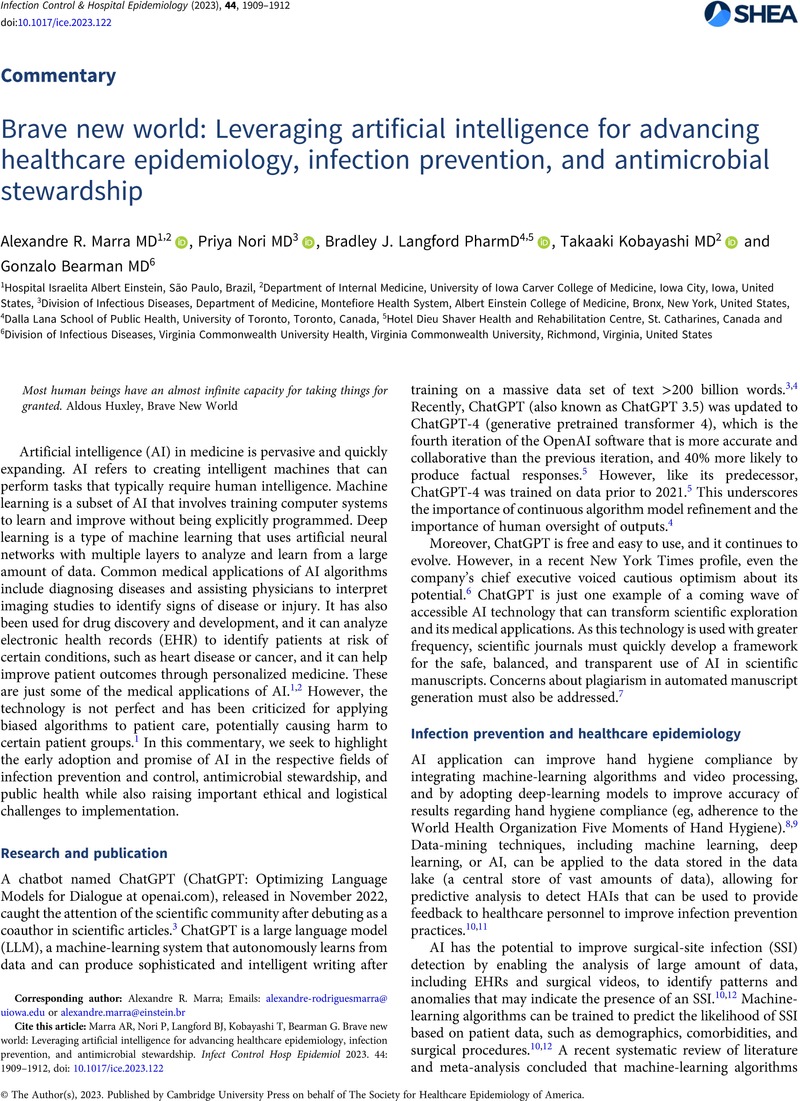Crossref Citations
This article has been cited by the following publications. This list is generated based on data provided by Crossref.
Wolfensberger, Aline
Scherrer, Alexandra U.
and
Sax, Hugo
2024.
Automated surveillance of non-ventilator-associated hospital-acquired pneumonia (nvHAP): a systematic literature review.
Antimicrobial Resistance & Infection Control,
Vol. 13,
Issue. 1,
Giacobbe, Daniele Roberto
Marelli, Cristina
Guastavino, Sabrina
Mora, Sara
Rosso, Nicola
Signori, Alessio
Campi, Cristina
Giacomini, Mauro
and
Bassetti, Matteo
2024.
Explainable and Interpretable Machine Learning for Antimicrobial Stewardship: Opportunities and Challenges.
Clinical Therapeutics,
Vol. 46,
Issue. 6,
p.
474.
Ahmed, Sirwan Khalid
Hussein, Safin
Qurbani, Karzan
Ibrahim, Radhwan Hussein
Fareeq, Abdulmalik
Mahmood, Kochr Ali
and
Mohamed, Mona Gamal
2024.
Antimicrobial resistance: Impacts, challenges, and future prospects.
Journal of Medicine, Surgery, and Public Health,
Vol. 2,
Issue. ,
p.
100081.
Non, Lemuel R
Marra, Alexandre R
and
Ince, Dilek
2025.
Rise of the Machines - Artificial Intelligence in Healthcare Epidemiology.
Current Infectious Disease Reports,
Vol. 27,
Issue. 1,




